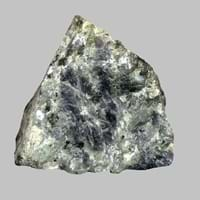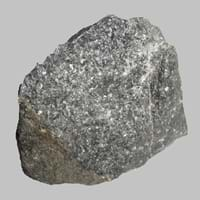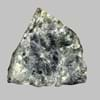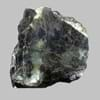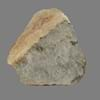Definition
Anorthosite is a granular igneous rock composed largely of labradorite or plagioclase
Andesite is a dark, fine-grained, brown or greyish intermediate volcanic rock which is a commonly found in lava
Origin
Unknown
North America
Discoverer
Unknown
Unknown
Etymology
From French anorthose plagioclase + -ite1
From Andes mountains, where it is found in abundance
Class
Igneous Rocks
Igneous Rocks
Sub-Class
Durable Rock, Medium Hardness Rock
Durable Rock, Hard Rock
Other Categories
Coarse Grained Rock, Opaque Rock
Fine Grained Rock, Opaque Rock
Texture
Foliated, Glassy
Aphanitic to Porphyritic
Color
Black, Bluish - Grey, Brown, Green, Grey, Light Greenish Grey, Pink, White
Bluish - Grey, Grey, Pink, Yellow
Durability
Durable
Durable
Appearance
Layered, Banded, Veined and Shiny
Dull and Soft
Interior Uses
Decorative Aggregates, Floor Tiles, Homes, Interior Decoration
Decorative Aggregates, Floor Tiles, Homes, Interior Decoration, Kitchens
Exterior Uses
As Building Stone, As Facing Stone, Garden Decoration
Office Buildings, Roof Tiles
Other Architectural Uses
Curbing
Curbing
Construction Industry
As Dimension Stone, Cement Manufacture, for Road Aggregate
Cobblestones, Construction Aggregate, for Road Aggregate
Medical Industry
Not Yet Used
Not Yet Used
Antiquity Uses
Artifacts, Sculpture, Small Figurines
Artifacts, Monuments, Sculpture, Small Figurines
Commercial Uses
Creating Artwork, Curling
Commemorative Tablets, Creating Artwork
Types
Proterozoic Anorthosite and Archean Anorthosite
Icelandite
Features
Generally rough to touch, Is one of the oldest rock
Generally rough to touch, High silica content, Is one of the oldest rock
Archaeological Significance
Monuments
Not Yet Used
Used
Famous Monuments
Not Applicable
Middle of the Earth in Ecuador
Famous Sculptures
Not Applicable
Data Not Available
Pictographs
Not Used
Not Used
Petroglyphs
Not Used
Not Used
Formation
Anorthosite is a phaneritic, intrusive igneous rock which is characterized by a predominance of plagioclase feldspar which is almost 90–100%, and a minimal mafic component.
Andesite is a fine-grained igneous rock that forms when the magma is erupted onto the surface and is crystallized quickly.
Mineral Content
Amphibole, Clinopyroxene, Ilmenite, Magnetite, Olivine, Orthopyroxene
Amphibole, Apatite, Biotite, Feldspar, Garnet, Hornblade, Ilmenite, Magnetite, Plagioclase, Pyroxene, Zircon
Compound Content
Ca, CaO, Chromium(III) Oxide, MgO, Sulfur Trioxide
Silicon Dioxide
Types of Metamorphism
Cataclastic Metamorphism, Contact Metamorphism
Burial Metamorphism, Cataclastic Metamorphism, Contact Metamorphism, Hydrothermal Metamorphism, Impact Metamorphism, Regional Metamorphism
Types of Weathering
Biological Weathering
Biological Weathering, Chemical Weathering, Mechanical Weathering
Types of Erosion
Chemical Erosion, Wind Erosion
Chemical Erosion, Coastal Erosion, Glacier Erosion
Grain Size
Coarse Grained
Very fine-grained
Fracture
Irregular
Uneven
Porosity
Less Porous
Less Porous
Luster
Pearly to Subvitreous
Vitreous
Compressive Strength
Not Available
Cleavage
Irregular
Not Available
Toughness
Not Available
1.1
Specific Gravity
2.62-2.82
2.5-2.8
Transparency
Translucent
Opaque
Density
2.7-4 g/cm3
2.11-2.36 g/cm3
Resistance
Heat Resistant, Impact Resistant, Pressure Resistant, Scratch Resistant, Wear Resistant
Heat Resistant, Pressure Resistant, Wear Resistant
Deposits in Eastern Continents
Asia
Not Yet Found
India, Indonesia, Japan, Nepal, South Korea
Africa
Not Yet Found
Egypt, Ethiopia, Morocco, Namibia, South Africa, Tanzania
Europe
Bulgaria, France, Germany, Greece, Hungary, Italy, Latvia, Lithuania, Malta, Poland, Portugal, Romania, Slovenia, Spain, Sweden, The Czech Republic
Austria, Finland, Germany, Italy, Romania, Turkey, United Kingdom
Others
Not Yet Found
Not Yet Found
Deposits in Western Continents
North America
Canada
Mexico, USA
South America
Bolivia, Colombia
Argentina, Bolivia, Chile, Colombia, Ecuador, Peru, Venezuela
Deposits in Oceania Continent
Australia
Central Australia, South Australia, Western Australia
New South Wales, New Zealand, Western Australia
Anorthosite vs Andesite Characteristics
Though some rocks look identical, they have certain characteristics which distinguish them from others. Characteristics of rocks include texture, appearance, color, fracture, streak, hardness etc. Anorthosite vs Andesite characteristics assist us to distinguish and recognize rocks. Also you can check about Properties of Anorthosite and Properties of Andesite. Learn more about Anorthosite vs Andesite in the next section. The interior uses of Anorthosite include Decorative aggregates, Floor tiles, Homes and Interior decoration whereas the interior uses of Andesite include Decorative aggregates, Floor tiles, Homes, Interior decoration and Kitchens. Due to some exceptional properties of Anorthosite and Andesite, they have various applications in construction industry. The uses of Anorthosite in construction industry include As dimension stone, Cement manufacture, For road aggregate and that of Andesite include Cobblestones, Construction aggregate, For road aggregate.
More about Anorthosite and Andesite
Here you can know more about Anorthosite and Andesite. The life cycle of a rock consists of formation of rock, composition of rock and transformation of rock. The composition of Anorthosite and Andesite consists of mineral content and compound content. The mineral content of Anorthosite includes Amphibole, Clinopyroxene, Ilmenite, Magnetite, Olivine, Orthopyroxene and mineral content of Andesite includes Amphibole, Apatite, Biotite, Feldspar, Garnet, Hornblade, Ilmenite, Magnetite, Plagioclase, Pyroxene, Zircon. You can also check out the list of all Igneous Rocks. When we have to compare Anorthosite vs Andesite, the texture, color and appearance plays an important role in determining the type of rock. Anorthosite is available in black, bluish - grey, brown, green, grey, light greenish grey, pink, white colors whereas, Andesite is available in bluish - grey, grey, pink, yellow colors. Appearance of Anorthosite is Layered, Banded, Veined and Shiny and that of Andesite is Dull and Soft. Properties of rock is another aspect for Anorthosite vs Andesite. The hardness of Anorthosite is 5-6 and that of Andesite is 7. The types of Anorthosite are Proterozoic Anorthosite and Archean Anorthosite whereas types of Andesite are Icelandite. Streak of rock is the color of powder produced when it is dragged across an unweathered surface. The streak of Anorthosite and Andesite is white. The specific heat capacity of Anorthosite is 0.84 kJ/Kg K and that of Andesite is 2.39 kJ/Kg K. Depending on the properties like hardness, toughness, specific heat capacity, porosity etc., rocks are resistant to heat, wear, impact, etc.Anorthosite is heat resistant, impact resistant, pressure resistant, scratch resistant, wear resistant whereas Andesite is heat resistant, pressure resistant, wear resistant.
